Polyurethane(PU)is commonly used as a binder of porous elastic mixtures.After being heated to 60 to 80 ℃, it can be mixed with aggregates[1].For asphalt binders, the temperature of PU is normally higher than 120 ℃, which increases fuel consumption and exacerbates air pollution[2].PU binders have two types, namely, two-and single-component PU[3-5].Two-component PU is formed through a reaction between polyol and isocyanate[6].After being cured for about 40 min, two-component PU has a fast curing speed, and the viscosity of PU binders can reach above 3 000 mPa·s[7-8].In China, the distance from a mixture fabricating station to a paving field is normally greater than 10 km, and transporting mixtures by a truck takes more than 2 h[9].This observation indicates that the curing speed of two-component PU is too fast for paving in China.The workability of single-component PU is obviously better than that of two-component PU, and its viscosity can be easily controlled by temperature during paving.Therefore, single-component PU is commonly used as a binder of mixtures in porous elastic pavement engineering.
Few studies have been performed on the curing properties of PU[10].Dong et al.[11] used FTIR, Raman, and DSC to characterize the chemical structure of PU.Das et al.[12] investigated the curing properties and nanocomposites of PU and obtained curing performance based on the time of “dry to touch” and “dry to hard.” They also used two curing reaction kinetic models to calculate the activation energy of PU.
Porous elastic mixtures contain basalt aggregates, rubber aggregates, and PU binders.Studies on two-component PU adhesive porous elastic mixtures have mainly focused on mechanical properties[13].Wang et al.[14] prepared a porous elastic road surface with a rubber aggregate and two-component PU and examined the absorption coefficient of a porous elastic road surface through acoustic experiments.Li et al.[15] compared the microscopic, functional, and mechanical performance of the porous mixtures bonded with PU with those of mixtures bonded with an asphalt binder.They also studied the adaptability of the porous elastic road surface to the mechanical and functional properties of urban roads in cold regions through experimental and numerical simulation.
This study was conducted to investigate the mechanical properties of a single-component PU porous elastic mixture(PPEM).The viscosity-time curve of single-component PU was measured to determine the mixing and compacting temperatures.The curing properties of single-component PU and PPEM were evaluated through FTIR and Marshall tests.The mechanical properties of PPEM were evaluated through the following tests: rutting test, 3-point-bending test, soaked Marshall stability test, freeze-thaw splitting test, and Cantabro test.The effects of a water bath on the stability of aggregate-PU/asphalt mortar-aggregate systems were explored through pull-out and shear tests.
1 Viscosity of Single-Component PU
Two kinds of PU, namely, PU-Ⅰ and PU-Ⅱ, were adopted in this research.The main component and basic properties of PU-Ⅰ and PU-Ⅱ are shown in Tab.1.
Tab.1 Main component and basic properties
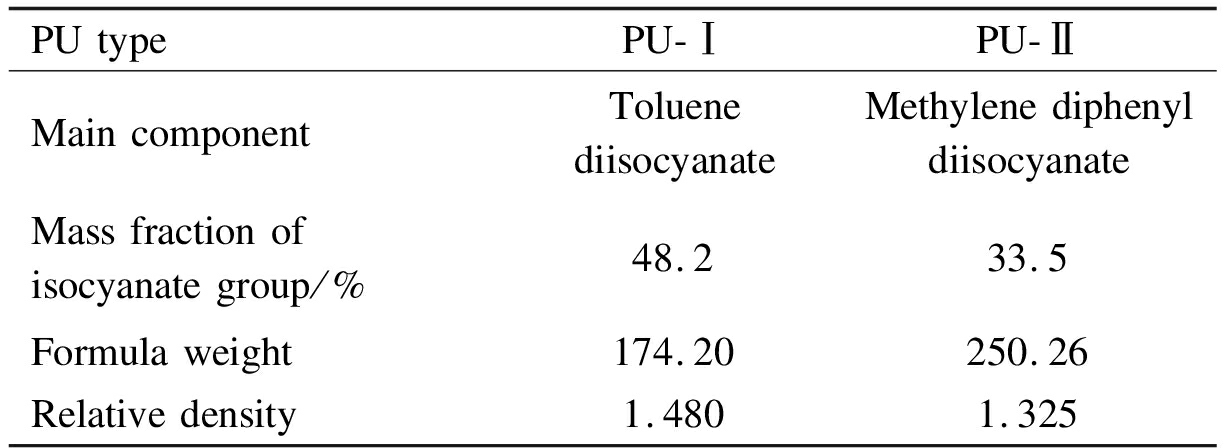
PUtypePU-ⅠPU-ⅡMaincomponentToluenediisocyanateMethylenediphenyldiisocyanateMassfractionofisocyanategroup/%48.233.5Formulaweight174.20250.26Relativedensity1.4801.325
According to the JTG E20—2011 Standard Test Method of Bitumen and Bituminous Mixtures for Highway Engineering, the viscosity of the binder should be 150 to 190 mPa·s when the binder is mixed with aggregates, but it should be 1 000 to 3 000 mPa·s when the mixture is compacted in accordance with the JTG/T 3364-02—2019 Specifications for Design and Construction of Pavement on Highway Steel Deck Bridge.A Brookfield viscometer was used to measure the viscosities of PU-Ⅰ and PU-Ⅱ at different temperatures and examine the mixing and compacting temperatures of single-component PU.The viscosity-temperature curves of PU-Ⅰ and PU-Ⅱ are shown in Fig.1.
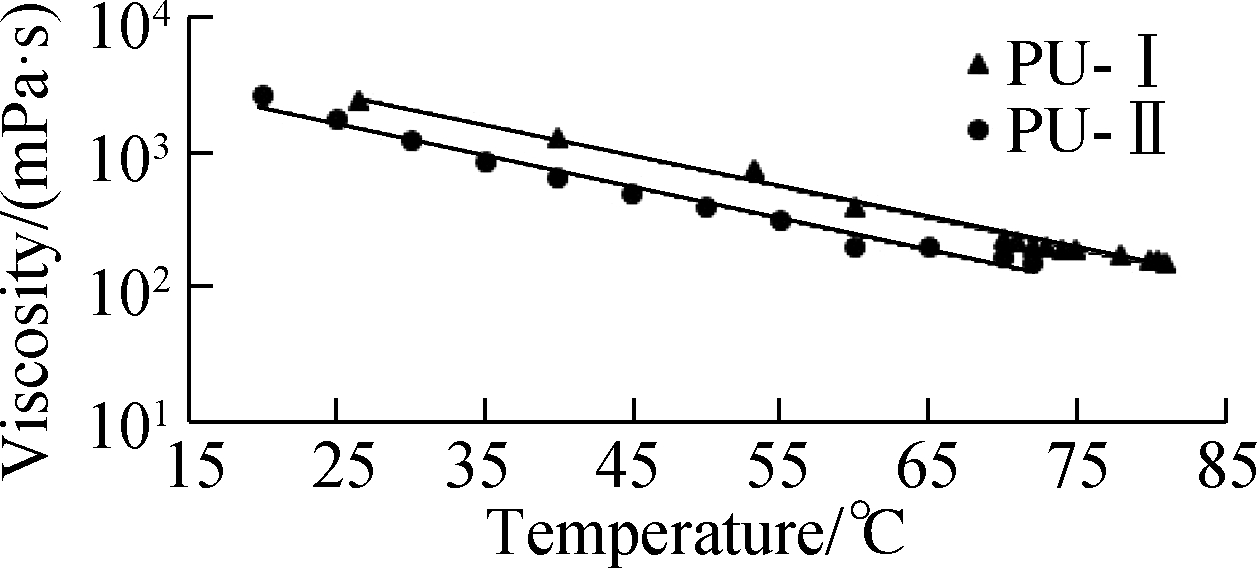
Fig.1 Viscosity-temperature curves of PU-Ⅰ and PU-Ⅱ
According to Fig.1, the viscosities and temperatures of PU-Ⅰ and PU-Ⅱ have a significantly negative correlation.Moreover, the viscosities of PU-Ⅰ and PU-Ⅱ are 2 750 and 1 600 mPa·s at room temperature(25 ℃), respectively.The viscosities of PU-Ⅰ and PU-Ⅱ are between 150 and 190 mPa·s when they reach their mixing temperatures(75 to 80 ℃ and 64 to 68 ℃, respectively).In the following mixture fabrication, PU-Ⅰ and PU-Ⅱ were first heated to 77 and 66 ℃, respectively.Then, they were mixed with aggregates.The mixtures were compacted at room temperature(25 ℃).
2 Curing Performance of Single-component PU and PPEM
2.1 Fourier transform infrared spectrum(FTIR)of single-component PU
The absorbance of the key functional groups of single-component PU under different curing times was determined through FTIR.
(1)
(2)
where A1, A2, and A0 are the peak areas of isocyanate, urea, and benzene groups, respectively; I and U are the isocyanate and urea indices, respectively.
The peak area ratio method was used to calculate I and U according to Eqs.(1)and(2).Benzene was selected as the reference group because it(1 599 cm-1)does not participate in the curing reaction of single-component PU.The wave numbers of the isocyanate and urea groups are 2 265 and 1 642 cm-1, respectively[16].In addition, the curing duration for single-component PU was 7 d, the average temperature within 7 d was 16.2 ℃, and the average humidity was 40.9%(see Fig.2).The FTIR results of single-component PU at different curing times are shown in Fig.3.
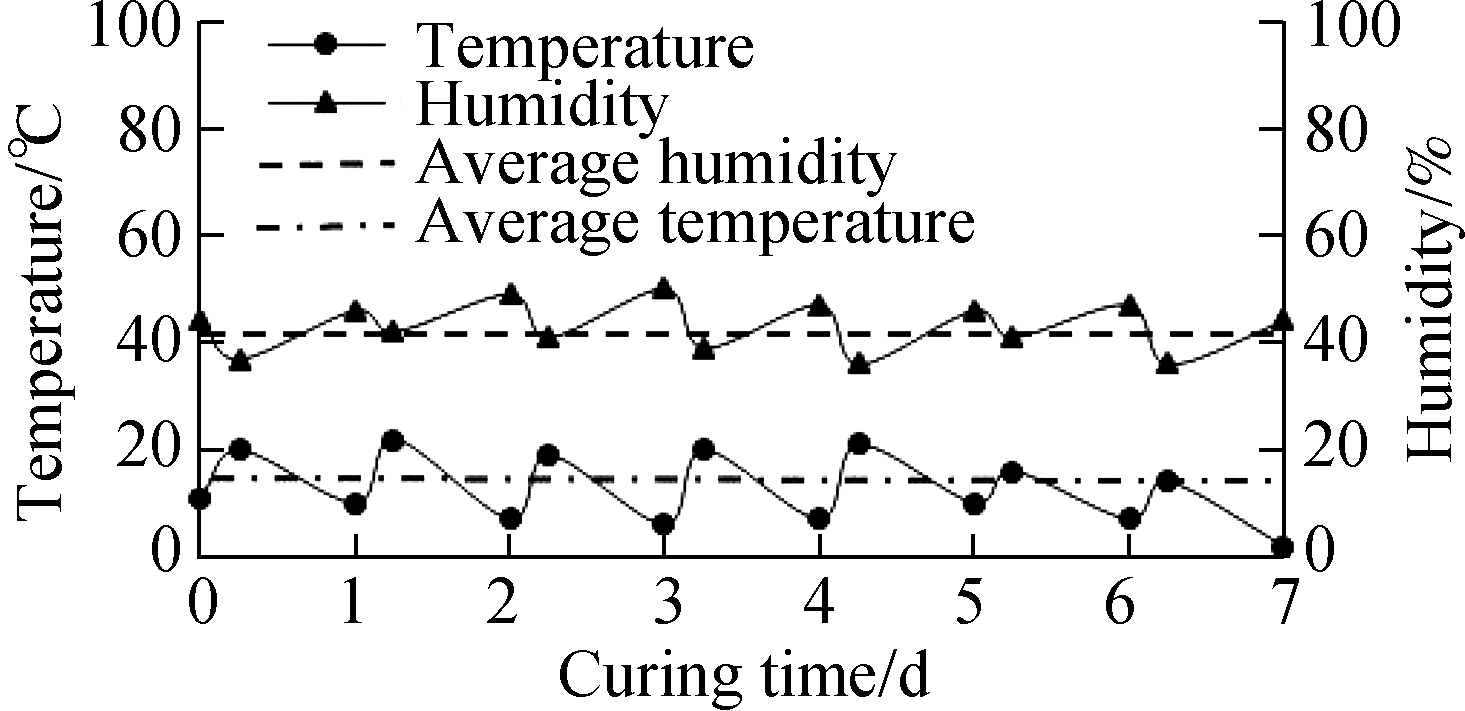
Fig.2 Laboratory temperature and humidity

Fig.3 Single-component PU under different curing durations
In Fig.3, curing time negatively affected the isocyanate indices of PU-Ⅰ and PU-Ⅱ but positively influenced their urea indices.When curing was performed for more than 4 d, the isocyanate and urea indices of PU-Ⅰ and PU-Ⅱ changed slightly.Therefore, PU-Ⅰ and PU-Ⅱ were almost completely cured after 4 d of curing.
2.2 Marshall stability test on PPEM under room curing condition
The PPEM Marshall specimens were prepared on the basis of the mixing and compaction temperatures of PU-Ⅰ and PU-Ⅱ.Specifically, PU-Ⅰ and PU-Ⅱ were utilized as binders, basalt and rubber were chosen as aggregates, and the mixtures were numbered PPEM-Ⅰ and PPEM-Ⅱ, respectively.The gradation of PPEM is shown in Tab.2.The optimum PU content was 4.5%.After the Marshall specimens were fabricated, the Marshall stability test was carried out(see Fig.4).The curing temperature and humidity after 7 d were the same as those of FTIR.
Tab.2 Gradation of PPEM
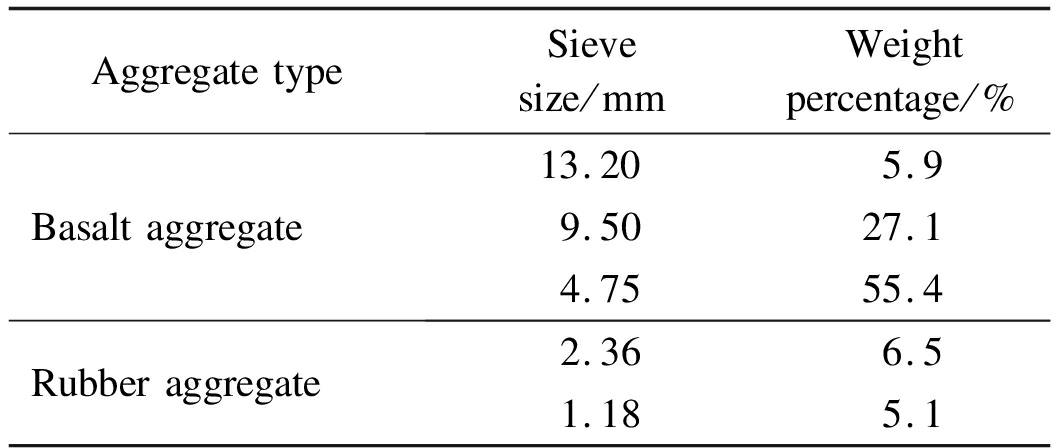
AggregatetypeSievesize/mmWeightpercentage/%Basaltaggregate13.205.99.5027.14.7555.4Rubberaggregate2.366.51.185.1

Fig.4 Marshall stability of PPEM under room curing condition
In Fig.4, the Marshall stability(MS)of PPEM had a significantly positive correlation with curing time.Specifically, Marshall specimens could not be demolded after they were cured for 1 d at room temperature because they did not bond.Moreover, the MS of PPEM-Ⅰ and PPEM-Ⅱ Marshall specimens after being cured at room temperature for 2 d were higher than 3.5 kN.Consequently, they reached the stability requirements of OGFC-13 in JTG F40—2004 Technical Specifications for Construction of Highway Asphalt Pavements.The MS of PPEM-Ⅰ and PPEM-Ⅱ changed slightly after 4 d of curing, and the coefficients of variation were 0.022 and 0.019, respectively.Therefore, PPEM-Ⅰ and PPEM-Ⅱ were almost completely cured after 4 d of curing.Under the same room curing condition, the MS of PPEM-Ⅱ was lower than that of PPEM-Ⅰ.
2.3 Marshall stability test on PPEM under fast curing condition
According to the curing conditions of PPEM at room temperature, the curing speed of Marshall specimens is slow, resulting in the delay of transportation service.Single-component PU is produced using isocyanate and water in the environment.As such, in this study, the water sprinkle method was applied to improve the curing speed of PPEM.After the completion of the PPEM Marshall specimens, water was sprinkled on the upper and bottom surfaces of the specimens(see Fig.5).Moreover, the water-PPEM mass ratios were 2.0%, 1.5%, 1.0%, and 0.5%.The Marshall specimens of PPEM were cured at room temperature for 1 d.Then, the Marshall test was taken after the specimens were sprinkled with water.The measured results of Marshall stability are shown in Fig.6.
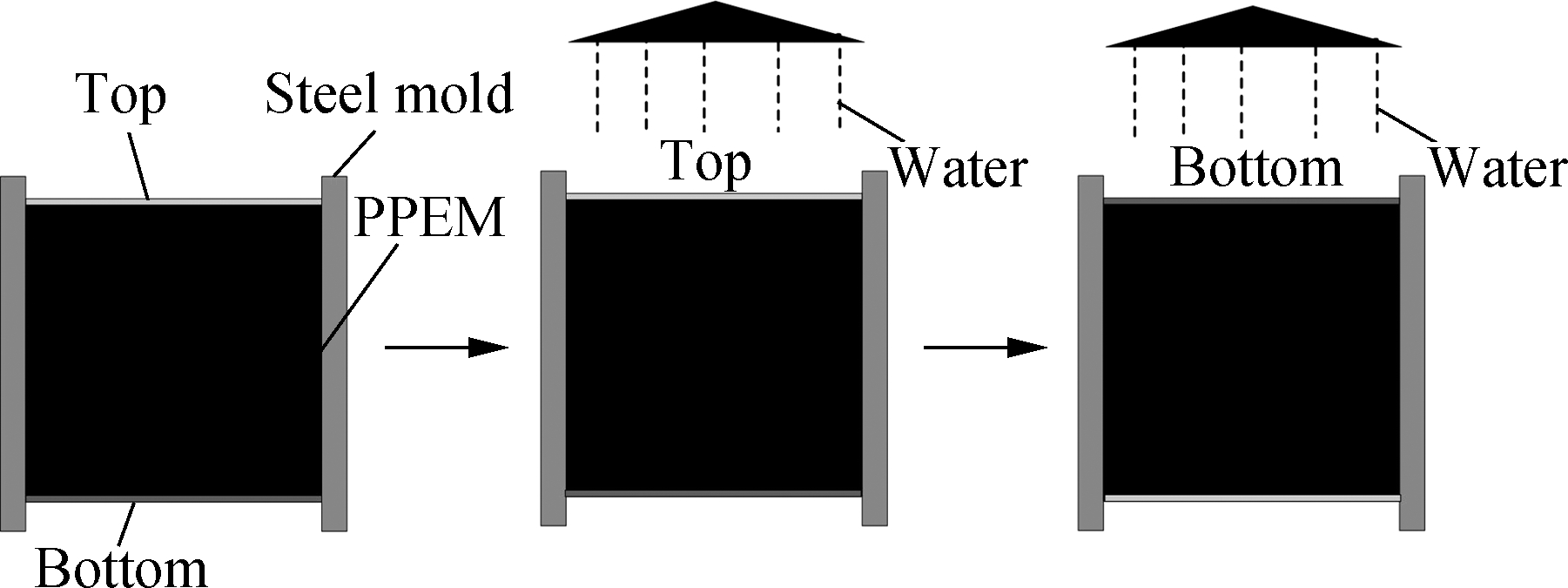
Fig.5 Water sprinkle method for PPEM
In Fig.6, curing time positively affected the MS of PPEM.Under the same fast curing condition, the MS of PPEM-Ⅱ was lower than that of PPEM-Ⅰ.When the water-PPEM mass ratio was 2%, the MS of PPEM-Ⅰ and PPEM-Ⅱ was similar to that of the samples under the room curing condition of 4 d.This result indicated that PPEM-Ⅰ and PPEM-Ⅱ were almost completely cured.Therefore, in the subsequent production of PPEM specimens, the water sprinkle method was adopted to improve the curing speed, and the water-PPEM mass ratio was 2%.

Fig.6 Marshall stability of PPEM under fast curing conditions
3 Mechanical Performance of PPEM
3.1 Experiments
In terms of the mechanical performance of PPEM, rutting test, 3-point bending test, moisture susceptibility test, and Cantabro test were conducted in accordance with JTG E20—2011 Standard Test Method of Bitumen and Bituminous Mixtures for Highway Engineering.The mechanical performance of porous asphalt concrete-13(PAC-13), which was chosen as the reference group to be compared with PPEM, was also examined.Specifically, SBS-and Tafpack Super(TPS)-modified bitumens were used as the asphalt binders of SBS-PAC-13 and TPS-PAC-13, respectively.The gradation of PAC-13 is shown in Tab.3, and the optimum asphalt content was 4.5%.
Tab.3 Gradation of PAC-13

Sievesize/mmPassingpercent/%16.0010013.2094.89.5055.74.7517.42.3613.41.1811.80.609.10.307.40.155.90.0754.8
3.2 Results and discussion
The mechanical test results of PPEM and PAC-13 are shown in Fig 7.
According to Fig.7(a), the average dynamic stability(DS)of PAC-13 is lower than that of PPEM.The high-temperature stability of PPEM-Ⅰ is better than that of PPEM-Ⅱ.Moreover, the average DS values of PPEM-Ⅰ are 5.3 and 4.6 times as high as that of SBS-PAC-13 and TPS-PAC-13, respectively.Therefore, PPEM has good rutting resistance.
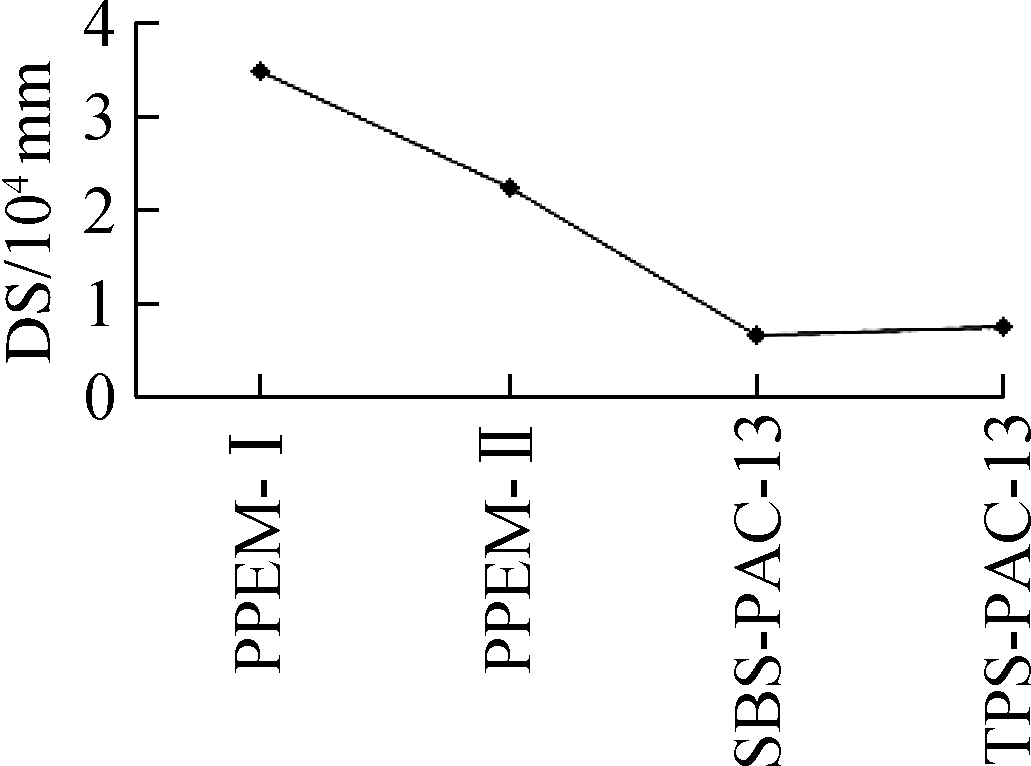
(a)
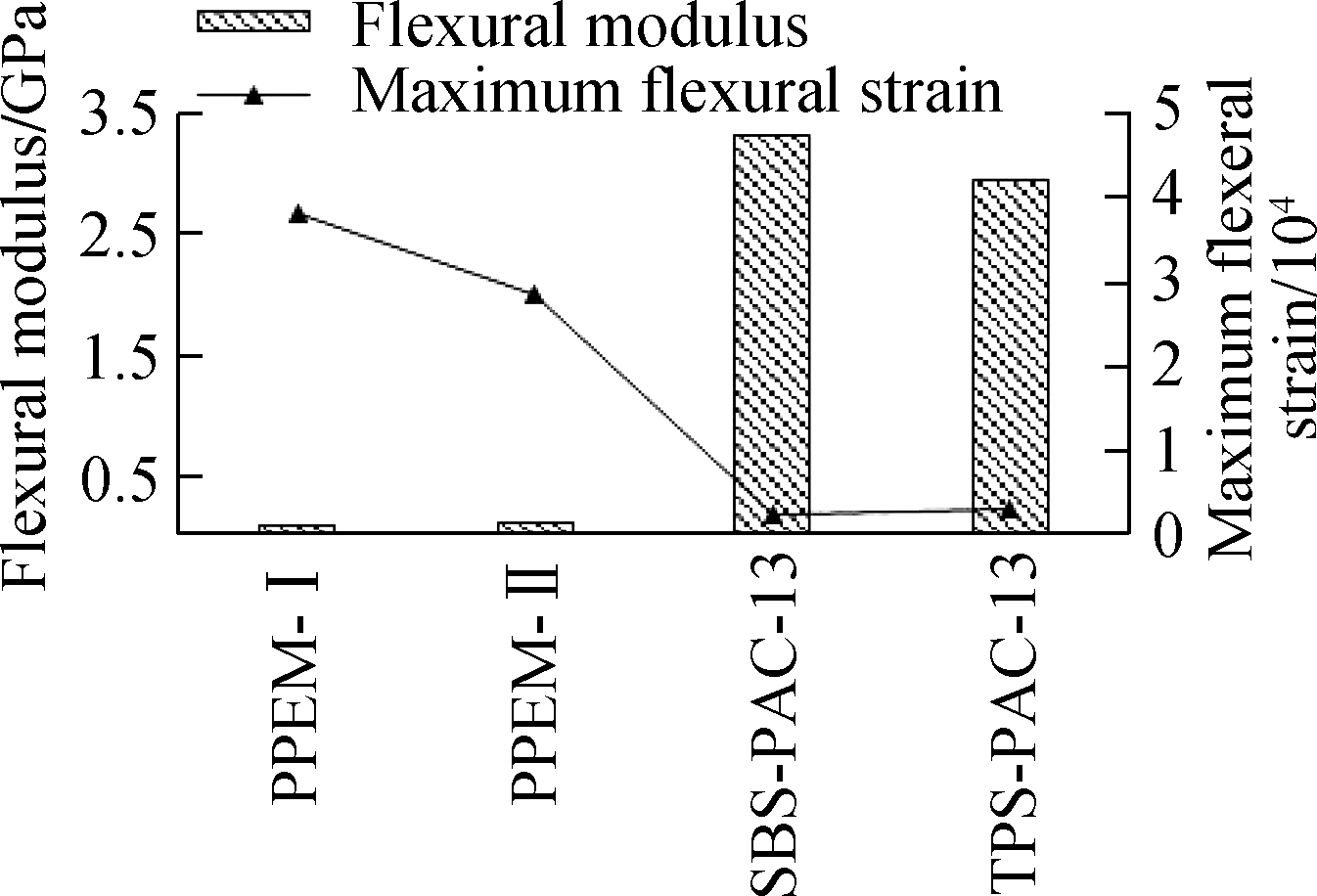
(b)
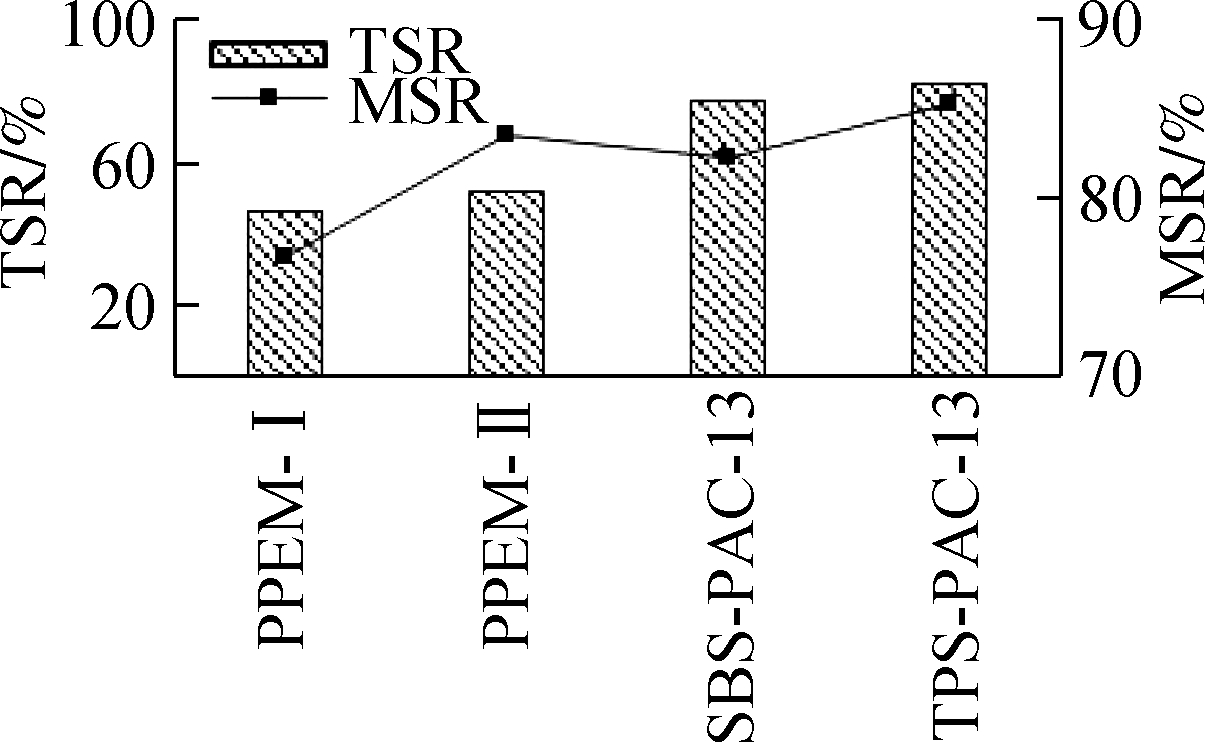
(c)

(d)
Fig.7 Mechanical performance of PPEM and PAC-13.(a)High-temperature stability;(b)Low-temperature crack resistance;(c)Moisture susceptibility;(d)Raveling resistance
In Fig.7(b), the flexural modulus of PPEM is lower than that of PAC-13, whereas the maximum flexural strain of PPEM is higher than that of PAC-13 because the rubber aggregate is adopted in PPEM.It is more flexible than basalt aggregate.Therefore, the flexibility and brittle cracking resistance of PPEM are better than those of PAC-13.
In Fig.7(c), the residual Marshall stabilities(MSR)of PPEM and PAC-13 are higher than 75%, which is the criterion of MSR for OGFC-13 in JTG F40—2004.PPEM-Ⅰ has the lowest MSR, whereas the MSR values of PPEM-Ⅱ, SBS-PAC-13, and TPS-PAC-13 are similar(the coefficient of variation is 0.018).This result indicates that PPEM can be utilized in rainy areas.As for the freeze-thaw splitting test results, the tensile strength ratio(TSR)of PPEM is lower than that of PAC-13.The TSR of PPEM is not greater than 70%, which is the criterion of TSR for asphalt mixture in JTG F40—2004.Therefore, PPEM is not recommended to be adopted in seasonal freezing areas.
According to Fig.7(d), the mass loss(Rm)of PPEM-Ⅰ is lower than that of PPEM-Ⅱ and PAC-13, indicating that the raveling resistance of PPEM-Ⅰ is better than that of PPEM-Ⅱ and PAC-13.However, the mass loss of PPEM-Ⅱ is 1.6 times as high as the criterion(20%)of OGFC-13 in JTG F40—2004.Therefore, the adhesive property of PU-Ⅱ is worse than that of the three other binders.
4 Effects of Water Bath on Stability of Aggregate-PU/asphalt mortar-aggregate
According to the mechanical performance of PPEM, the moisture susceptibility of PPEM is not as good as PAC-13.Moisture susceptibility is usually affected by air void ratio, rubber aggregate content, and mortar gradation in mixtures.Our laboratory test revealed that the air void ratios of PPEM(22%)and PAC-13(21%)were similar.The higher the rubber content is, the higher the moisture susceptibility of the mixture will be[16].Therefore, the gradation of fine aggregates(the maximum sieve size of the mortar is 1.18 mm)in the mixture may significantly affect their moisture susceptibility because PPEM has fewer fine aggregates than PAC-13.
The specimens for rubber-PU-rubber(RPR), basalt-PU-basalt(BPB), rubber-PU-basalt(RPB), and basalt-asphalt mortar-basalt(BAB)systems were fabricated to investigate this conjecture, as shown in Fig.8(a).After the RPR, BPB, and RPB specimens were fully cured, the water bath conditioning test was conducted at 25 ℃, and the maximum water bath duration of the four kinds of bonding systems(RPR, BPB, RPB, and BAB)was 5 d.Pull-out and shear tests(six replicates for each group)were conducted at 25 ℃ to compare the stability of different bonding systems, which are illustrated in Fig.8(b).The average adhesive and shear strength of aggregate-PU/asphalt mortar-aggregate systems are presented in Fig.9.

(a)
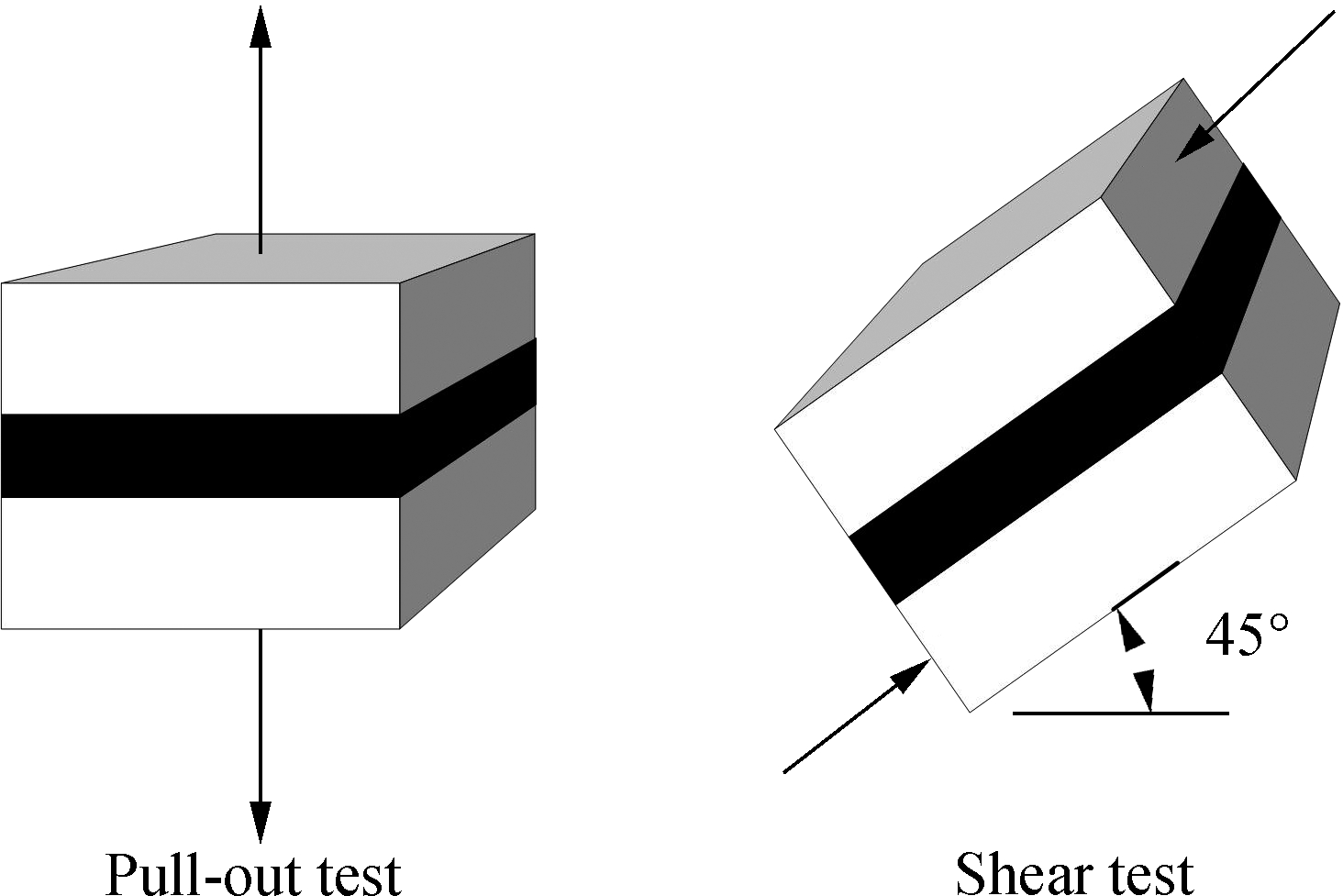
(b)
Fig.8 Mechanical tests for aggregate-PU/asphalt mortar-aggregate systems.(a)Aggregate-PU-Aggregate system(unit: cm);(b)Pull-out and shear tests
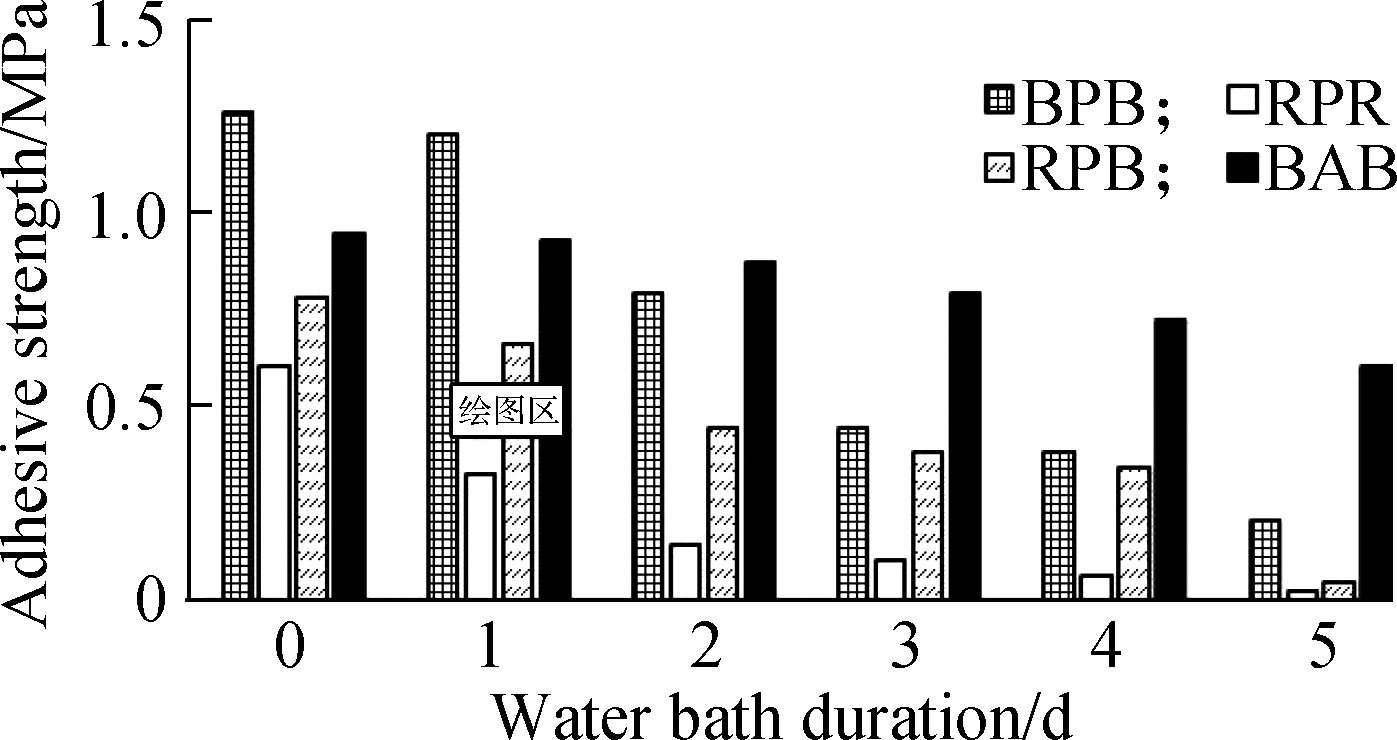
(a)

(b)
Fig.9 Mechanical performance of aggregate-PU/asphalt mortar-aggregate systems.(a)Adhesive strength;(b)Shear strength
According to Fig.9, the adhesive strength and shear strength of aggregate-PU/asphalt mortar-aggregate systems are negatively related to water bath duration.The adhesive strength and shear strength of RPR and RPB are lower than those of BPB.Moreover, RPR has the lowest adhesive strength, whereas RPB has the lowest shear strength.Furthermore, the adhesive strength and shear strength of BPB are higher than those of BAB; however, after 2 d in a water bath, the adhesive strength and shear strength of BPB are lower than those of BAB.Therefore, the effects of water baths on the bonding property of PU are more obvious than those of asphalt mortar.As such, the moisture susceptibility of PPEM is not as good as that of PAC-13.
5 Conclusions
1)The mixing temperatures of PU-Ⅰ and PU-Ⅱ are from 75 to 80 ℃ and from 64 to 68 ℃, respectively.The mixture can be compacted at 25 ℃.
2)PPEM-Ⅰ and PPEM-Ⅱ are almost completely cured after 4 d.When the water-PPEM mass ratio is 2%, the MS of PPEM-Ⅰ and PPEM-Ⅱ is similar to that of the samples under the room curing condition for 4 d.The water sprinkle method can obviously improve the curing speed of PPEM.
3)PPEM has good resistance to rutting, brittle cracking, and raveling.PPEM can be utilized in rainy areas, but it is not recommended for seasonal freezing areas.
4)The adhesive strength and shear strength of aggregate-PU/asphalt mortar-aggregate systems are negatively related to water bath duration.The adhesive strength and shear strength of RPR and RPB are lower than those of BPB.RPR has the lowest adhesive strength, whereas RPB has the lowest shear strength.
[1] Hu Z X, Hu X M, Cheng W M, et al.Performance optimization of one-component polyurethane healing agent for self-healing concrete[J].Construction and Building Materials, 2018, 179: 151-159.DOI: 10.1016/j.conbuildmat.2018.05.199.
[2] Huang Y, Bird R, Heidrich O.Development of a life cycle assessment tool for construction and maintenance of asphalt pavements[J].Journal of Cleaner Production, 2009, 17(2): 283-296.DOI: 10.1016/j.jclepro.2008.06.005.
[3] Liu X, Wang J, Huang K, et al.Experimental study on dynamic water grouting of modified water-soluble polyurethane[J].KSCE Journal of Civil Engineering, 2019, 23(9):3897-3906.DOI: 10.1007/s12205-019-0086-2.
[4] Wu M Y, Hu X M, Hu Z X, et al.Two-component polyurethane healing system: Effect of different accelerators and capsules on the healing efficiency of dynamic concrete cracks[J].Construction and Building Materials, 2019, 227: 116700.DOI: 10.1016/j.conbuildmat.2019.116700.
[5] Wu M Y, Hu X M, Zhang Q, et al.Growth environment optimization for inducing bacterial mineralization and its application in concrete healing[J].Construction and Building Materials, 2019, 209: 631-643.DOI: 10.1016/j.conbuildmat.2019.03.181.
[6] Ospina A C, Orozco V H, Giraldo L F, et al.Study of waterborne polyurethane materials under aging treatments.Effect of the soft segment length[J].Progress in Organic Coatings, 2020, 138: 105357.DOI: 10.1016/j.porgcoat.2019.105357.
[7] Cong L, Wang T, Tan L, et al.Laboratory evaluation on performance of porous polyurethane mixtures and OGFC[J].Construction and Building Materials, 2018, 169: 436-442.DOI: 10.1016/j.conbuildmat.2018.02.145.
[8] Conermann G, Dilger K.Injection bonding of structural components with fast-curing two-component PUR-systems[J].Applied Adhesion Science, 2018, 6(1): 12.DOI: 10.1186/s40563-018-0113-4.
[9] Hao P, Zhang X.Asphalt and asphalt mixtures[M].Beijing: China Communications Press, 2009: 3-4.(in Chinese)
[10] Sun M.Research on performance of polyurethane porous elastic pavement mixture[D].Nanjing: Southeast University, 2016.(in Chinese)
[11] Dong F, Maganty S, Meschter S J, et al.Effects of curing conditions on structural evolution and mechanical properties of UV-curable polyurethane acrylate coatings[J].Progress in Organic Coatings, 2018, 114: 58-67.DOI: 10.1016/j.porgcoat.2017.09.018.
[12] Das S, Pandey P, Mohanty S, et al.Effect of nanosilica on the physicochemical, morphological and curing characteristics of transesterified castor oil based polyurethane coatings[J].Progress in Organic Coatings, 2016, 97: 233-243.DOI: 10.1016/j.porgcoat.2016.04.012.
[13] Lu G, Renken L, Li T, et al.Experimental study on the polyurethane-bound pervious mixtures in the application of permeable pavements[J].Construction and Building Materials, 2019, 202: 838-850.DOI: 10.1016/j.conbuildmat.2019.01.051.
[14] Wang D, Schacht A, Leng Z, et al.Effects of material composition on mechanical and acoustic performance of poroelastic road surface(PERS)[J].Construction and Building Materials, 2017, 135: 352-360.DOI: 10.1016/j.conbuildmat.2016.12.207.
[15] Li T, Lu G, Wang D, et al.Key properties of high-performance polyurethane bounded pervious mixture[J].China Journal of Highway and Transport, 2019, 32(4): 158-169.DOI: 10.19721/j.cnki.1001-7372.2019.04.013.(in Chinese)
[16] Zhong K, Zhang M, Sun M Z, et al.Curing performance of monocomponent polyurethane porous elastic mixture[C]//International Conference on Energy Science and Chemical Engineering.Dalian, China, 2020: 012065.DOI:10.1088/1755-1315/565/1/012065.